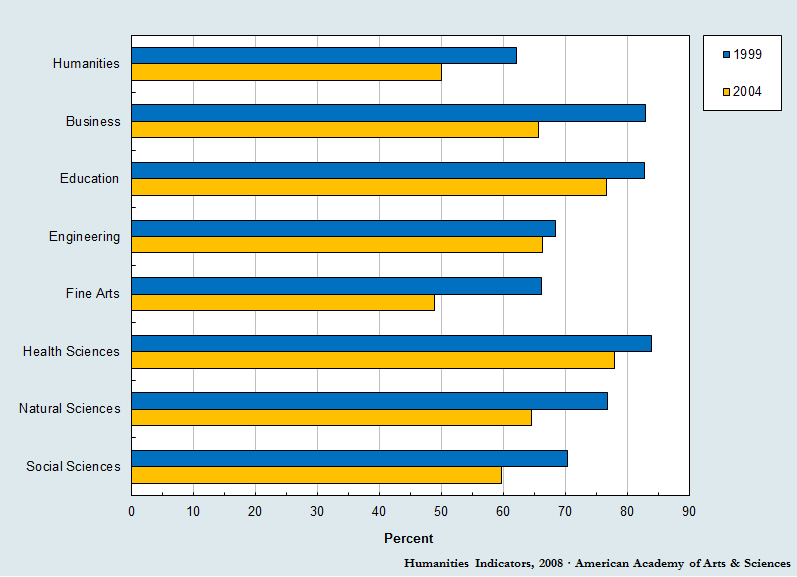Percentage of Part-Time Postsecondary Faculty Who Prefer Part-Time Employment to Full-Time, 1994 and 2004*

* The items dealing with desire for part-time work in the 1999 and 2004 surveys were not identical. The estimate for 1999 is the percentage of people who indicated that they worked part-time because they preferred part-time employment to full-time. The 2004 estimate is the number of part-time faculty who responded “not preferred” to a question that asked whether they preferred to work full time. The assumption made here is that these individuals preferred to work part-time, although another possibility is that a certain number of respondents had neutral preferences for employment status.
Source: U.S. Department of Education, National Center for Education Statistics (NCES), National Study of Postsecondary Faculty; data accessed and analyzed via NCES’s online Data Analysis System at http://nces.ed.gov/das/.
Source: U.S. Department of Education, National Center for Education Statistics (NCES), National Study of Postsecondary Faculty; data accessed and analyzed via NCES’s online Data Analysis System at http://nces.ed.gov/das/.
See the [noteOnLink linkId='335']Note on the Definition of Faculty and on the Classification of Disciplines[/noteOnLink].
The National Study of Postsecondary Faculty (NSOPF) was last administered in 2004. The NSOPF—the source of the data for Indicators III-10 to III-15, all of which deal with the characteristics of the nation’s humanities professoriate—has been suspended indefinitely by the U.S. Department of Education’s National Center for Educational Statistics (NCES).
The only remaining source of nationally representative data on the postsecondary humanities faculty is the American Academy of Art and Sciences–sponsored Humanities Departmental Survey (HDS). The HDS provides a variety of data on humanities faculty members and their teaching loads (as well as different aspects of the student experience; data from the HDS will be incorporated into the Humanities Indicators in the near future), but it does not supply the sort of information on faculty earnings, racial composition, institutional distribution, or job satisfaction that was available from the NSOPF.

